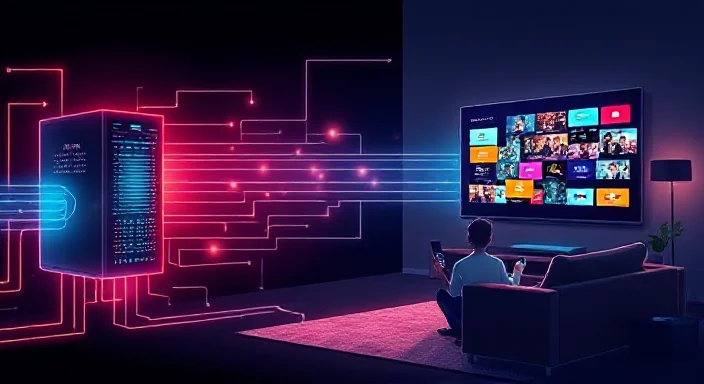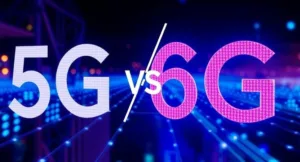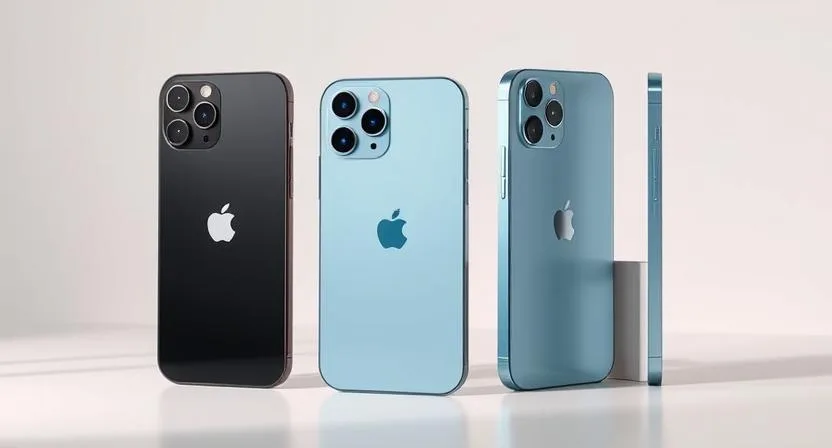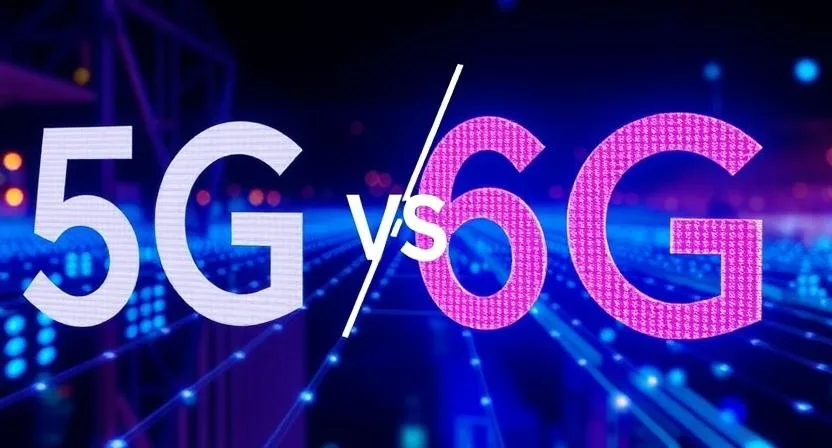IPTV represents the direction of television.
In a world where the internet is queen and convenience rules, it is insufficient to live with whatever is now on television. Today’s customers want to enjoy their favorite shows whenever they feel like it. IPTV primarily promises to deliver material on demand using Internet technologies, similar to OTT streaming. And the growth shows no stopping as many individuals incorporate IPTV into their viewing patterns.
But just how does It operate? Apart from OTT, what distinguishes IPTV? Are set-top boxes necessary?
What is IPTV?

Internet protocol television, or IPTV for short, lets users access video content via the Internet. Among popular IPTV offerings are Netflix, Disney+, Hulu, HBO Max, and Peacock TV.
It also means you may watch your preferred TV shows from computers, laptops, and cellphones instead of needing to gather in front of the tube.
Those who also wish to view internet protocol television on their actual TVs—probably most of us—will either have to:
- Get a smart TV: The most recent TV models, also referred to as “smart TVs,” are designed especially for streaming video over internet protocol. No more additions are required.
- Get a set-top box: Whether it’s an Apple TV or a USB dongle stick like Google Chromecast, you will need a gadget that turns streaming signals into a format your conventional TV can read.
Setting up an at-home IPTV system without a smart TV usually involves:
- a connection for wireless internet
- a router coupled to a USB dongle stick or set-top box
- Either a set-top box or a USB dongle stick to translate it’s signals into TV-friendly ones
- Other digital devices that directly access, include tablets and cell phones.
Just because the end-user experience is somewhat simple does not mean the IPTV technology is simple as well.
From the broadcaster’s point of view, Internet protocol television calls for both a sophisticated video storage technology and a user-friendly interface allowing viewers to select the shows they wish to see.
Once someone chooses a show, an IPTV broadcaster has to:
- Create a format fit for streaming the video file.
- Encrypt the video file such that only those who paid may decode and access it.
- Embed commercials into the video file (usually in line with a program’s free-running schedule).
- Share the video clip online with hundreds, maybe thousands, of individuals.
Particularly if they intend to promote, an Internet protocol television content provider also needs enough bandwidth to enable mass, high-quality video streaming.
IPTV hybrid
Traditional broadcast television is combined in hybrid IPTV with video transmitted over managed IP networks (IPTV) or public Internet (OTT). More television programming alternatives with a single set-top box are the key benefits this arrangement offers for customers. Apart from regular cable TV, users of hybrid IPTV may enjoy live pay-per-view streaming and video on demand (VOD).
What is IPTV’s mechanism?

Rooftop antennas turn arriving radio waves into electrical impulses that your TV decodes into pictures and sounds.
While cable TV provides signals straight to your TV without radio waves, satellites bounce these signals into space and back.
Whether you have cable or satellite TV, broadcasters provide signals in real-time, so you can only see what is now on the air. You have no control over the available programs unless you have a recording device. It is a tune-in and “take it or leave it” affair.
TV using internet protocols operates differently. From email to accessing a web page or downloading a file, the method of distributing applications with IPTV is quite similar to anything else you would do online.
The contents of a downloaded file do not immediately show up on a computer. The file divides into many little bits called packets as it downloads. Every one of these packets has special information and can be flexible enough to pass over several paths as needed.
All information moves across the internet using packet switching, often known as The internet provides a highly efficient method of transporting information from a source to a destination by breaking down a large piece of data into smaller parts and sending each piece individually to the end-user.
Whether you’re sending an email, downloading an album, making phone calls, or watching TV, you may also distribute information anywhere over the internet if you can pack it.
The distinctions between regular TV and IPTV do not stop there. The two-way interaction included in IPTV services gives end consumers greater power and personalizing choices—often including the ability to engage.
IPTV also provides additional adaptability. IPTV lets users view anything they want whenever they want, not restrict viewers to a set program schedule. Tell your content provider what you wish to view, and they will promptly provide it via packets.
The network design driving these interactions can grow somewhat convoluted. Here’s a detailed, step-by-step guide of IPTV’s operations to help keep things straightforward:
Organizing activities
Live events are broadcast as they are created, much like conventional TV. Pre-recorded movies and shows, however, require storage capable of on-demand streaming. Limiting the amount of presently accessible programs is essential for some content providers to maintain the bandwidth of their service and minimize its influence on the internet.
Planning initiatives
Whether live or pre-recorded, all shows have to be turned into a digital format that packet switching can carry across the Internet. To cut buffering when streaming, videos have to be compressed. Ads should, if relevant, be included. To stop illegal access, the material is always encrypted.
Streaming programs
Watching IPTV is like surfing a webpage in many respects. In both circumstances, you are creating a temporary link between two computers such that one—in this example, yours—may access data from the other. Usually from a strong server concurrently sending data to other clients, a technique called unicasting, your computer—the client—gets data from an IPTV content provider.
IP multicasting
The server field client demands a severe load. Usually, delays, buffering, and a terrible user experience ensue when a client requests more than a server can handle—that is, tonnes of people try to see the same video simultaneously. To evade these circumstances, an IPTV system avoids them using IP multicasting—a distinct form of downloading for streaming. Once leaving the server, every packet simultaneously reaches several separate client locations.
IP addresses
Downloading any old file is not quite like streaming a program. Streaming a program means downloading portions of the file at a time; as it plays, you are getting the next portion of the file, thus ready for playback. Not the usual web-based protocols for downloading (HTTP and FTP), this operates using real-time protocol (RTP) and real-time streaming protocol (RTSP).
Understood networks
IPTV and OTT differ mostly in their networks. Usually with OTT, content distribution occurs on the public internet. Many providers of IPTV rely on under-control networks to guarantee service quality. Usually, this comprises a hierarchical network whereby the main office feeds regional video hub offices. These video hub offices then support local distribution offices linked to set-top boxes in households.
Knowing now how IPTV operates, let us now review the three varieties of IPTV.
IPTV and VOD
Video on demand (VOD) is the most often used IPTV format—probably the one you know most about. VOD, as its name implies, is content viewers, subscribers, or consumers may see whenever it would be most convenient.
Prime instances of IPTV and VOD at work are services like Netflix and Hulu. Customers of Netflix and Hulu have access to hundreds, maybe thousands, of films and TV shows in return for a monthly membership fee.
To view a title, users simply need to open the app on their phone, TV, or computer, select the desired program, and patiently wait for the packet-switching magic to begin.
Live IPTV streaming
You may also see live television shows using IPTV, regardless of your calling for it—IP simulcasting or live IPTV. Mostly utilized for news shows and live PPV events, the experience is like viewing live broadcasts on conventional TV.
IPTV with time-shifting capability
Like video on demand (VOD), time-shifted IPTV has a catch: time-shifted IPTV shows typically have a not-so-distant expiration date rather than being available endlessly. This is so because most people utilize this kind of IPTV to let users catch up on late broadcast content, such as news.
The development of IPTV

Like most major changes in the direction of events, the emergence of IPTV is the direct outcome of multiple distinct but tightly linked elements.
While mobile ad spending is rising, TV advertising spending is down. For years, “cord cutters” have challenged the long-standing feeling of security of cable providers, forcing them to shift with customer demands.
With an estimated compound annual growth rate (CAGR) of 7.1 percent between 2020 and 2027, the worldwide Internet protocol television industry was valued at around $40 billion in 2019.
Why is Internet protocol television so much sought after? The study provides some arguments for which data is not absolutely necessary to establish. Online content consumption is first at an all-time high. Second, their subscriber bases will probably increase as service providers cut rates and offer bundles.
Third, and maybe most crucially, telecom businesses are trending towards bettering their products to satisfy customer needs. To their consumers, telecom companies provide integrated services together with internet bundles more and more.
The expansion of hybrid Internet protocol television most clearly shows this. Inspired by internet video sites like Vimeo and YouTube, cable providers have at last addressed giving consumers access to view internet-based content on TVs.
Furthermore, increasingly specialized telecom companies require means to provide services without necessarily raising expenses or the complexity of their operations. By use of Internet protocol television, these companies can offer fresh services free from the weight of significant investment in extra network equipment.
Besides, these elements imply several things: First of all, viewing your preferred TV series has never been more convenient. Two, people truly enjoy simple solutions; the industry will keep expanding as long as Internet protocol television streaming services remain practical and reasonably priced for the end user.
Begin your IPTV subscription.
You cannot launch an Internet protocol television service on your own. From encoding to encrypting to storing, there are a lot of moving pieces—many of them technical—that you will have to figure out and pressure-test before anybody even views your material.
Vimeo OTT lets you turn your video material into a scalable, full-fledged subscription streaming service as user-friendly and easily available as Netflix. We will handle the tech so you can concentrate on your finest work: producing worthwhile material.
Stay Tuned with GizOasis for more!







